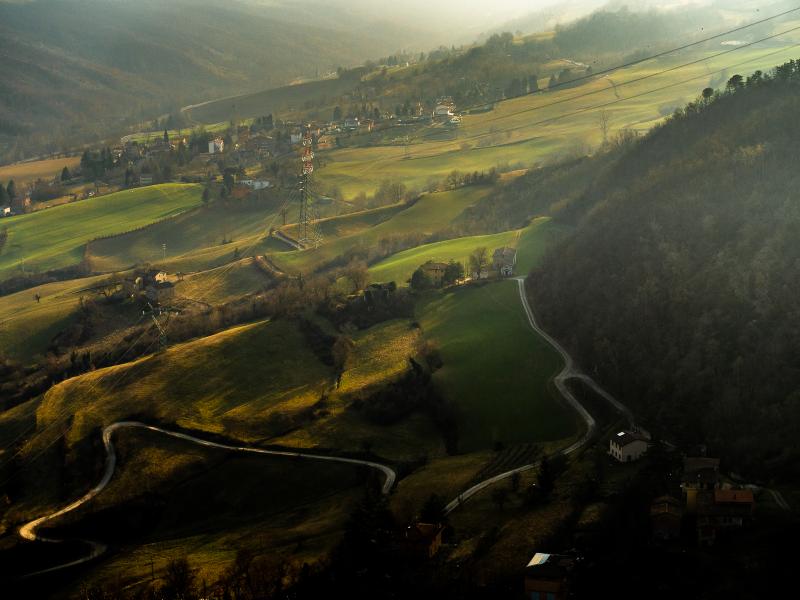Home / Itineraries /
Etruscans, Celts at Monte Bibele and the Luigi Fantini's "botroidi"
Updated on 03 December 2023

A day in nature under the banner of archaeology and speleology. This is the proposal of an itinerary that winds through the natural setting of the Zena Valley to discover the treasures kept in the Monterenzio Archaeological Museum, the Park of the archaeological-naturalistic area of Monte Bibele and the small "temple" dedicated to the Botroidi, millenary stones with anthropomorphic shapes collected by the famous Bolognese speleologist Luigi Fantini during his research along the ridges and paths of the Apennines.
Archaeological Museum "Luigi Fantini"
Named after the pioneer of prehistoric research in the Bologna area, the museum, located in the center of Monterenzio, illustrates the history of the peopling of the Idice and Zena valleys from prehistoric to Roman times, focusing on the Etruscan-Celtic period. Inside, alongside the objects of daily life, visitors can admire the evocative full-scale reconstruction of a hut from the Etruscan-Celtic settlement of Pianella di Monte Salvino and numerous artifacts from the grave goods found at the nearby sites of Monte Bibele and Monterenzio Vecchio. Evidence that illustrates, to great effect, the cultural fusion between Celts and Etruscans that occurred in these lands. Of notable interest is the terracotta solar disk found in the late 1960s, the dating of which goes back to the founding period of the settlement between the late 5th and early 4th centuries before Christ.
Archaeological-naturalistic area of Mount Bibele
After the visit to the museum, the experience of immersion in the world of the ancestors continues in the vast archaeological area of Mount Bibele, which can be easily reached by car and after a short and evocative walk in the woods, among protected floral and unspoiled landscapes. The Mount Bibele area represents the most important archaeological complex in Italy regarding the civilization of the Celts. It is considered unique in that it represents the most consistent Celtic example of urban-type planning. Developed on a settlement of Etruscan origin, it is composed of functionally differentiated sectors that allow us to understand the various aspects of the life of the people who inhabited it over the centuries. Of particular interest is a visit to the house reconstructed in a philological manner following the perimeter of the ancient building highlighted by archaeological excavations.
Botroidi Museum by Luigi Fantini
The Botroidi Museum is located in the locality of Tazzola (in the municipality of Pianoro), an ancient village dating back to 1100, along the CAI 815 trail, a splendid path that connects Zena Castle to Monte delle Formiche via the Torre dell'Erede (dating back to 1100). The museum houses what is called the world's largest collection of Botroidi and is conceived as a place to preserve and make known the anthropomorphic sandstone stones collected by speleology pioneer Luigi Fantini in the early 1900s along the Zena River. A geological journey, through 80 million years of history, among fossils, yellow sands and mysterious stones, in which, thanks to color, touch and smell, it is possible to learn about the history of the Earth, from the Cretaceous to the present day, in a direct and engaging way.
Duration: 24 hours
Interest: Art & Culture
Target audience: family/friends-single/couple